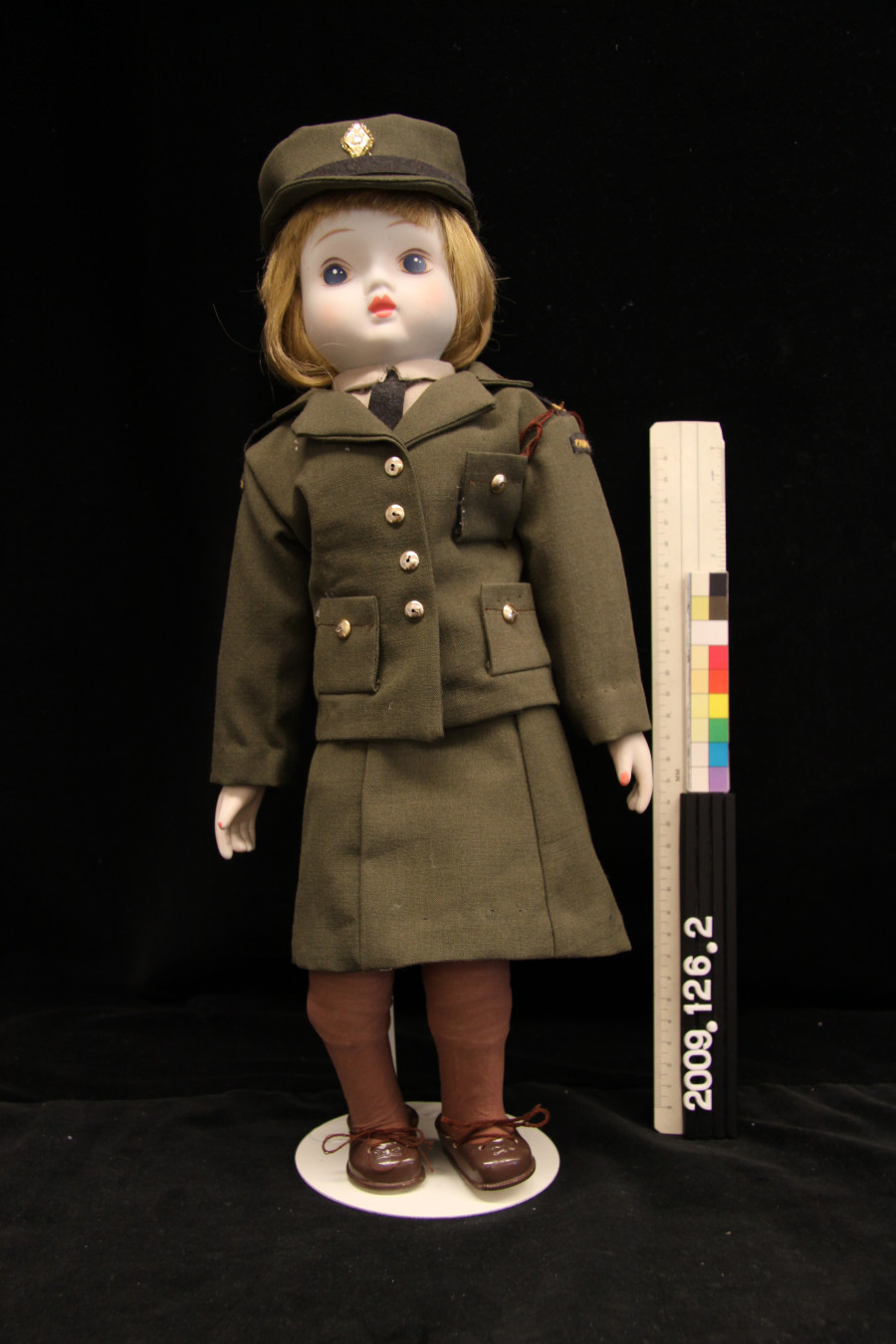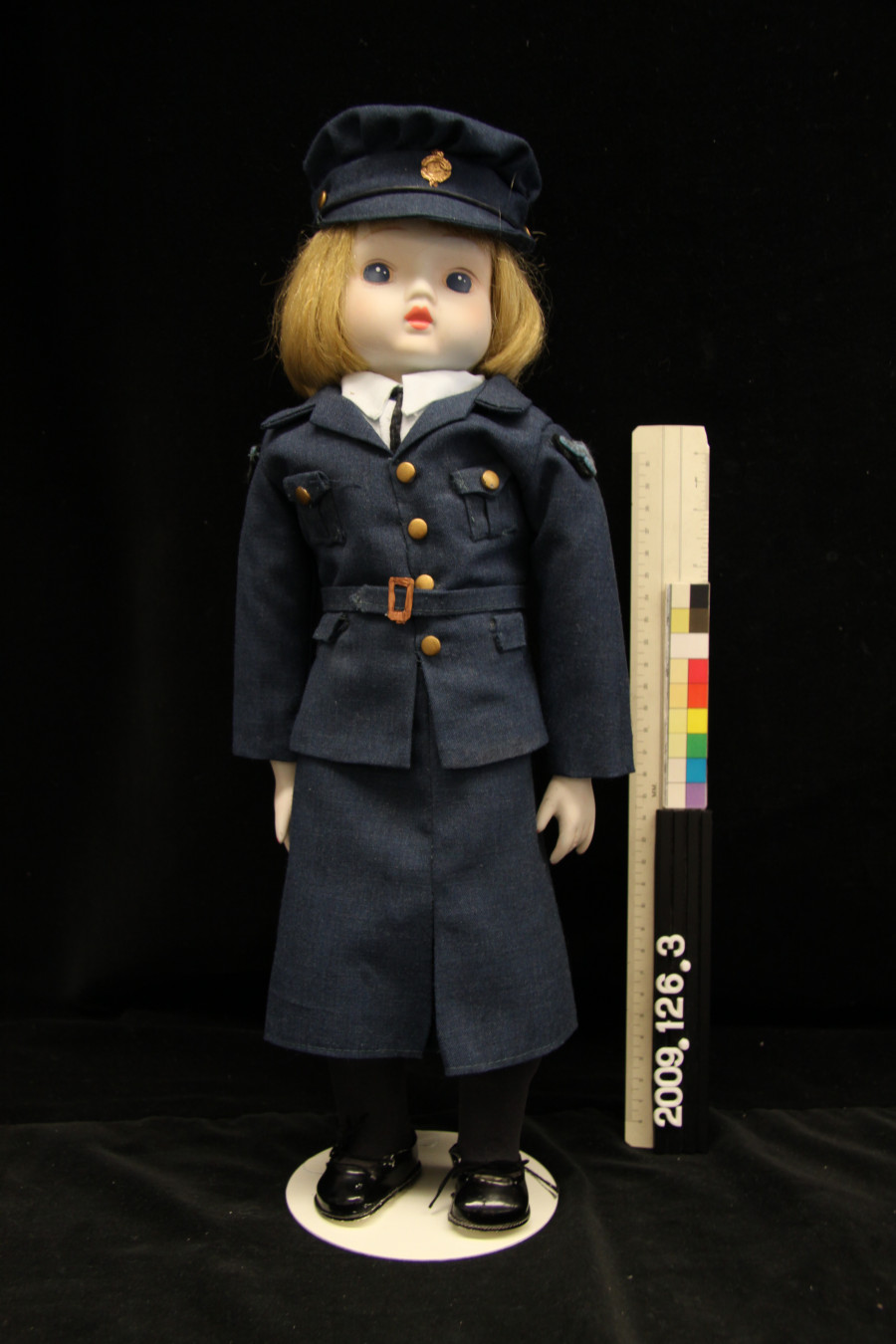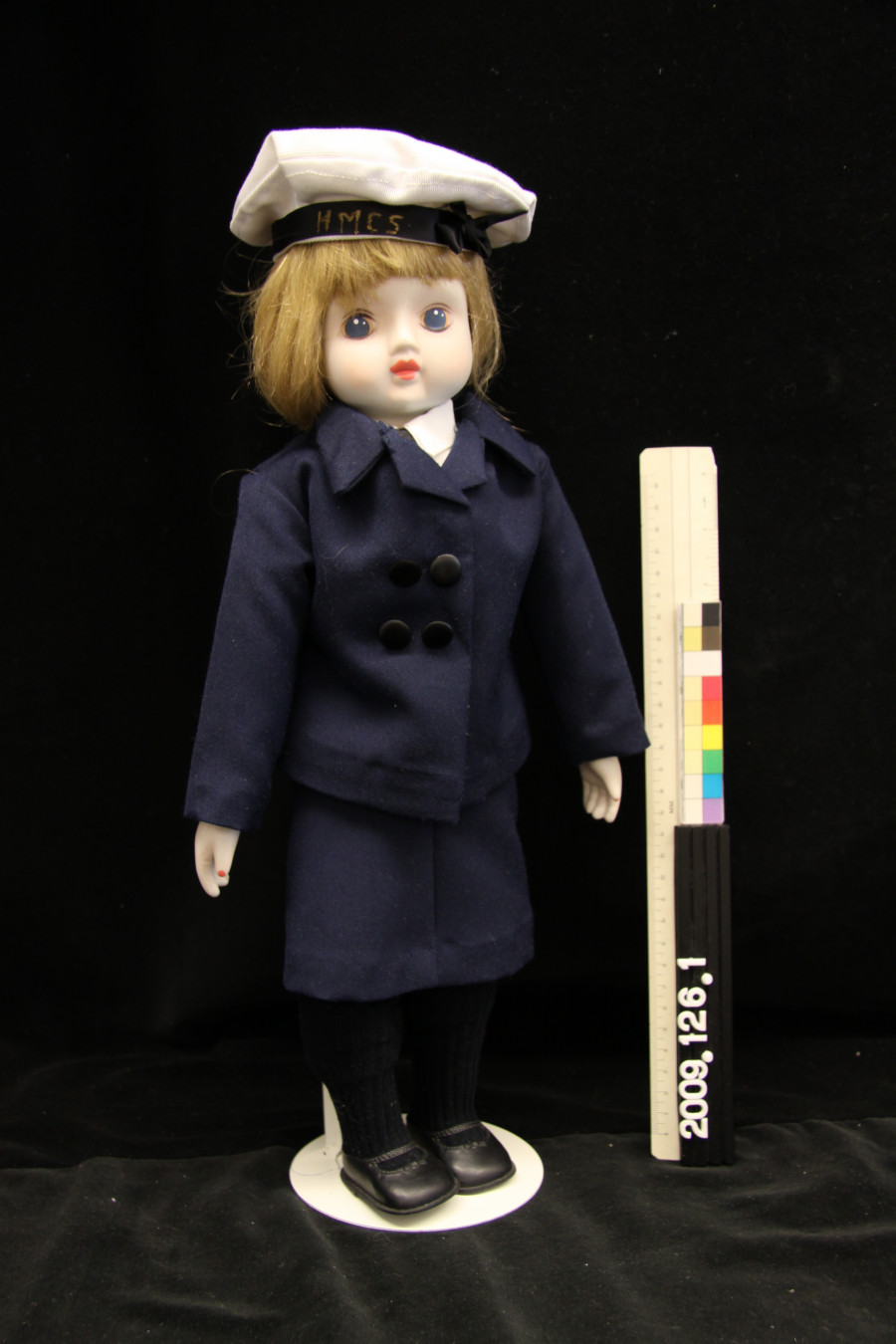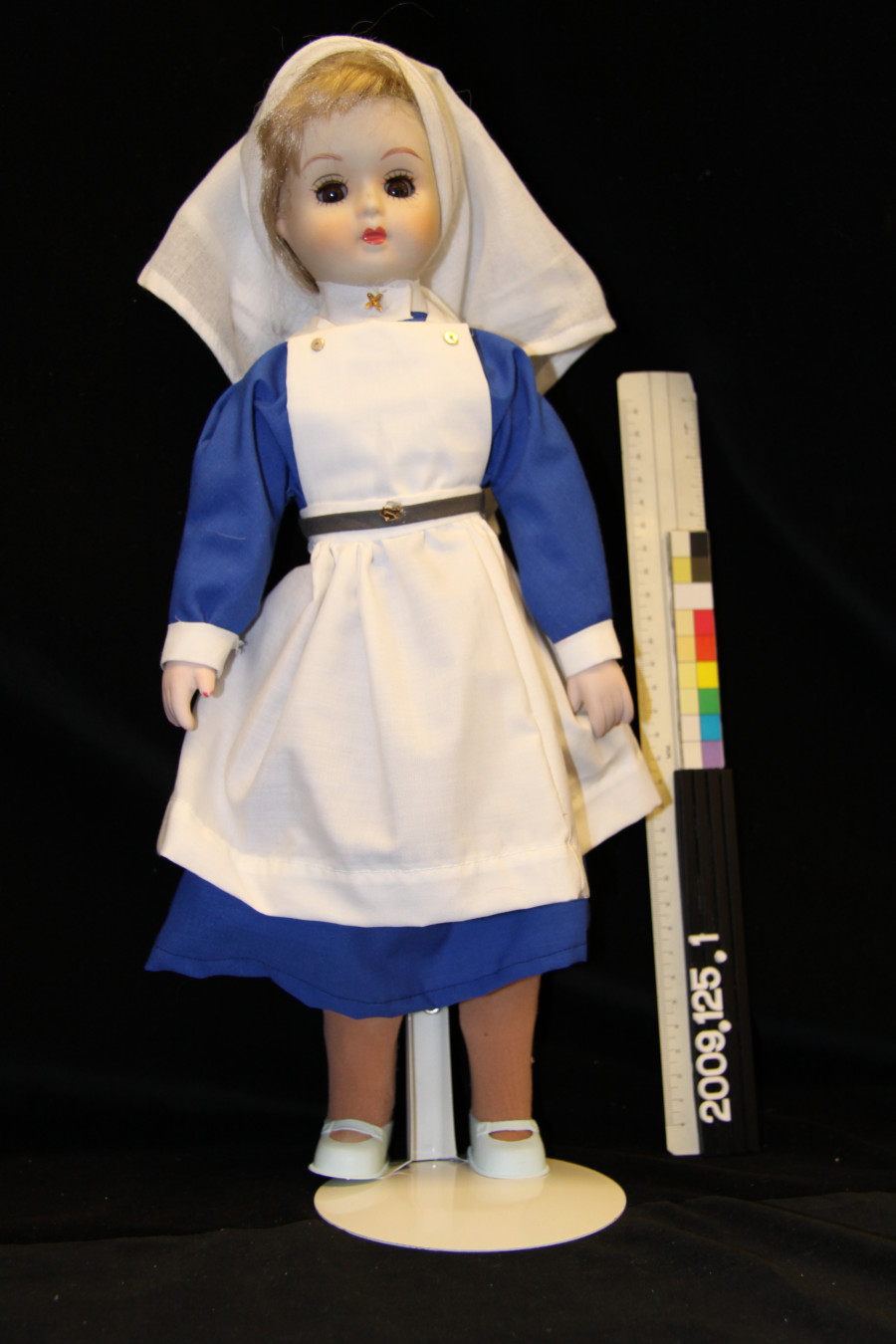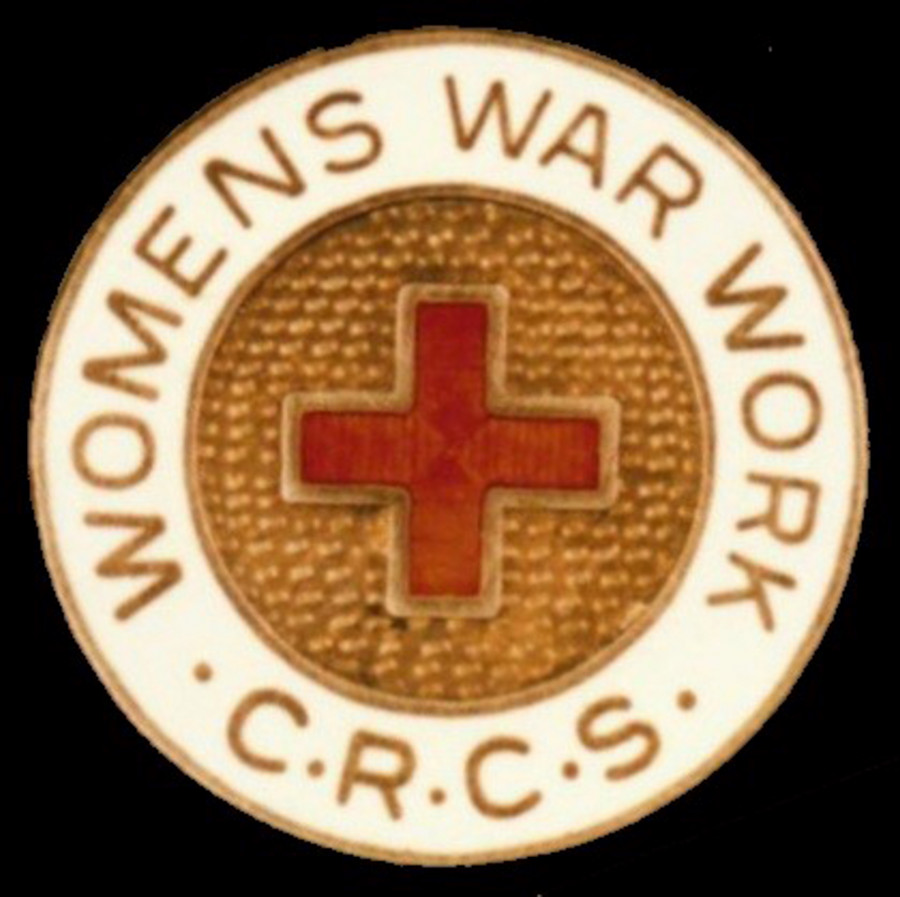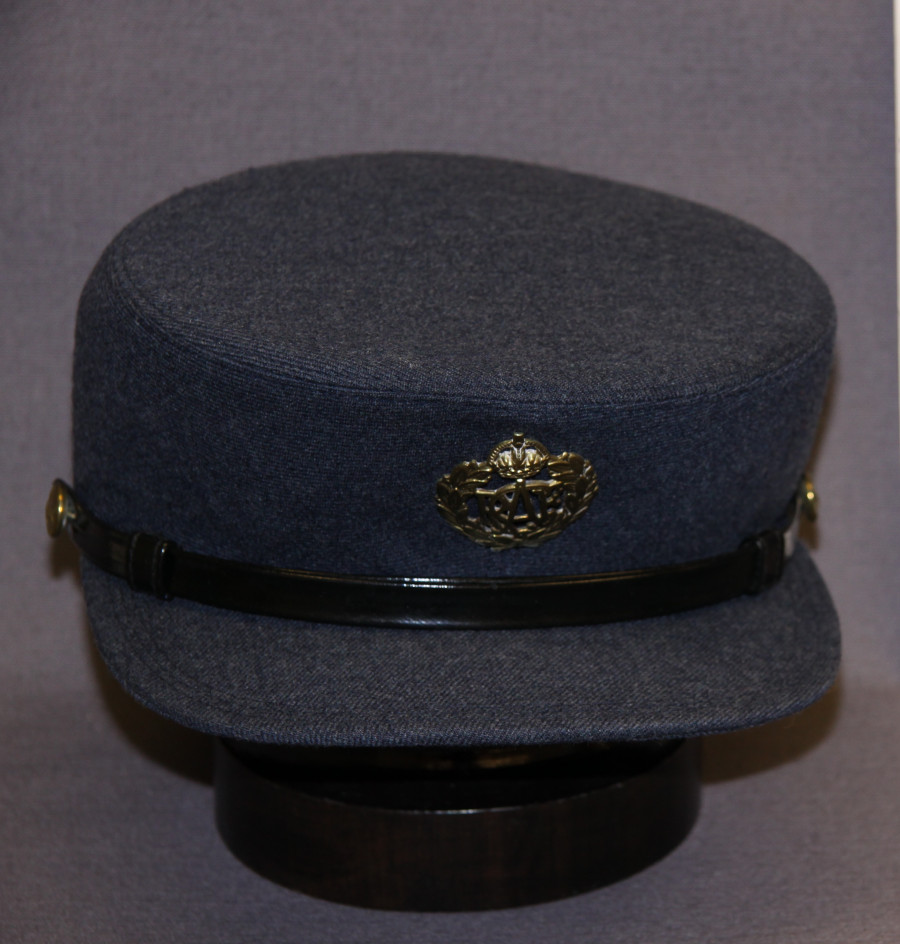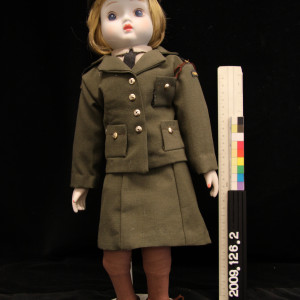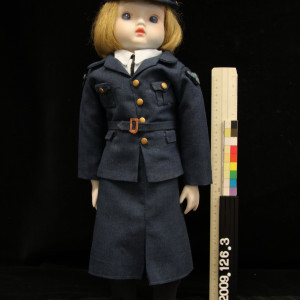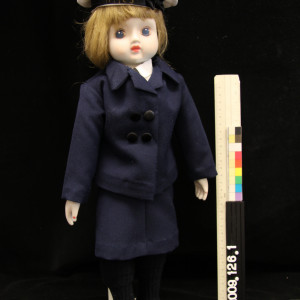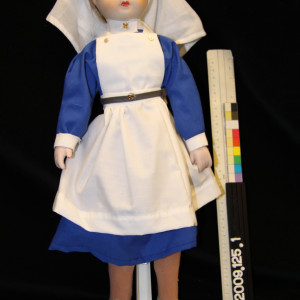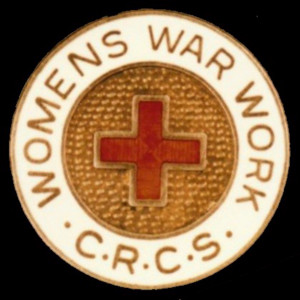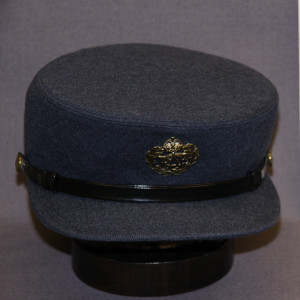Women’s War Service
- Date:
- 2009.08.12
- Record:
- 2009.126.2
- Materials:
- Doll in Canadian Women’s Army Corps service dress
During the war, while many women served on the home front, others went to war. The first women’s unit raised was the Canadian Women’s Army Corps (CWAC), founded in Victoria in 1941 by Mrs. Joan Kennedy. Although they were first dismissed as a “petticoat army” by a patronizing male, they became regular army in 1942. The CWAC uniforms included buttons featuring the image of Athena, Goddess of War. One who wore that uniform was Mary Greyeyes Reid, the first indigenous woman to join the CWAC. After the war she moved to Victoria and worked in a local restaurant until she retired. After her death in 2011 she was buried at Muskeg Lake Cree Nation, Saskatchewan. More than 22,000 women served in the CWAC.
Denied combat roles, CWAC women provided clerical, transport and wireless support, including deployment overseas in England, Italy and Northern Germany. Some did secret decoding and cipher work. Initially disbanded in August 1946, they were reinstituted and continued to serve until 1964.
The 17,038 women of the Royal Canadian Air Force Women’s Division (WD) did essential work, releasing men for overseas service and playing a crucial role at the training air bases of the British Commonwealth Air Training Program in Canada, where they prepared Allied air crews for combat. Their work expanded quickly to include over 22 trades, mechanical, electrical, radio, and parachute packing. Others served with RCAF Overseas Headquarters in London, sharing the risk of enemy bombing.
The last women’s unit founded were the 6,000 women of the Women’s Royal Canadian Naval Service (WRCNS), nicknamed “Wrens”, who were excluded from warships until 1945. But naval land bases being technically “stone frigates,” means the base commander at HMCS Bytown II, Captain Isabel Mcneill, became the first woman to command a RCN “ship.” Only paid 2/3 a male wage, the Wrens handled a wide range of clerical and transport work but also did LORAN, signals and cipher work. One hundred WRCNS participated in headquarters command and control work during D-Day.
As in the previous war, women also served overseas in the Royal Canadian Army Medical Corps (RCAMC) Nursing Sisters, holding a junior officer rank to give them authority over patients. They also shared the risks of bombing and shelling. Canadian women also worked for the Canadian Red Cross Service, providing comforts for wounded personnel, victims of war and prisoners of war.
After VE Day and demobilization, women war veterans joined the multi-service Canadian Legion, which has its own uniform. The service dress dolls pictured here are a gift of the Ex-Service Women’s Royal Canadian Legion Branch 182. The Branch was founded in 1945 and disbanded in 2008. The dolls were displayed at public events and monthly meetings as a remembrance of past war service. The CWAC uniform was made by Dorothy Creasy (Ferguson) from an old uniform and shirttail. The WD doll service uniform was crafted by Ione Canning (Ellis) with the hat badge, buttons and belt buckle insignia by Delphine Large (Cameron). The WRCNS uniform was made by Ethel Jaggard. The RCMC nursing sister was made by Sergeant Dorothy Creasy.
